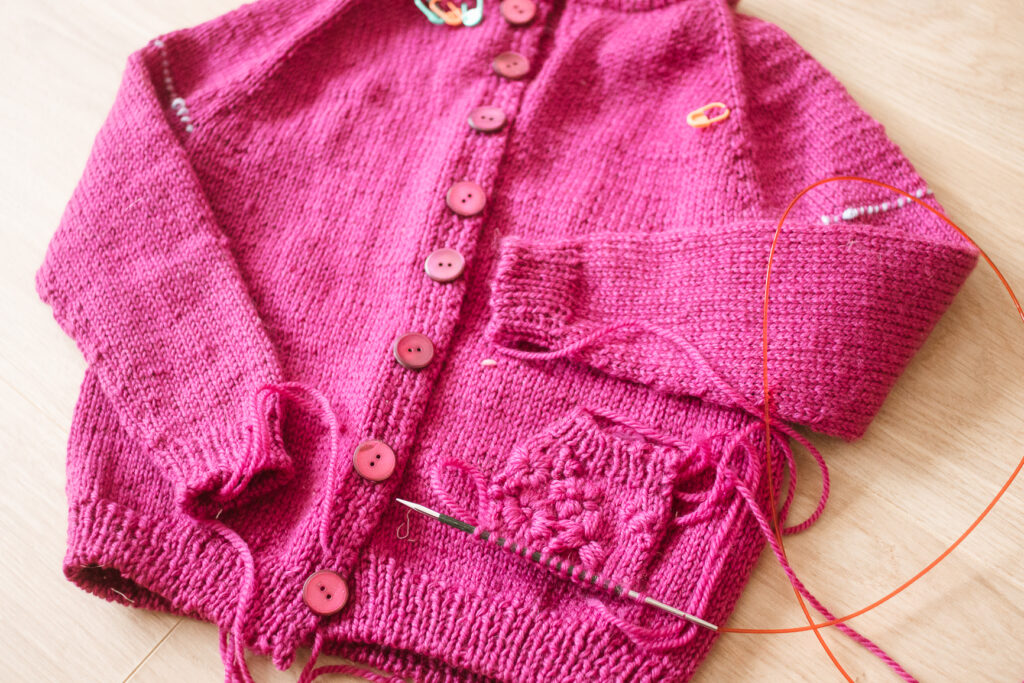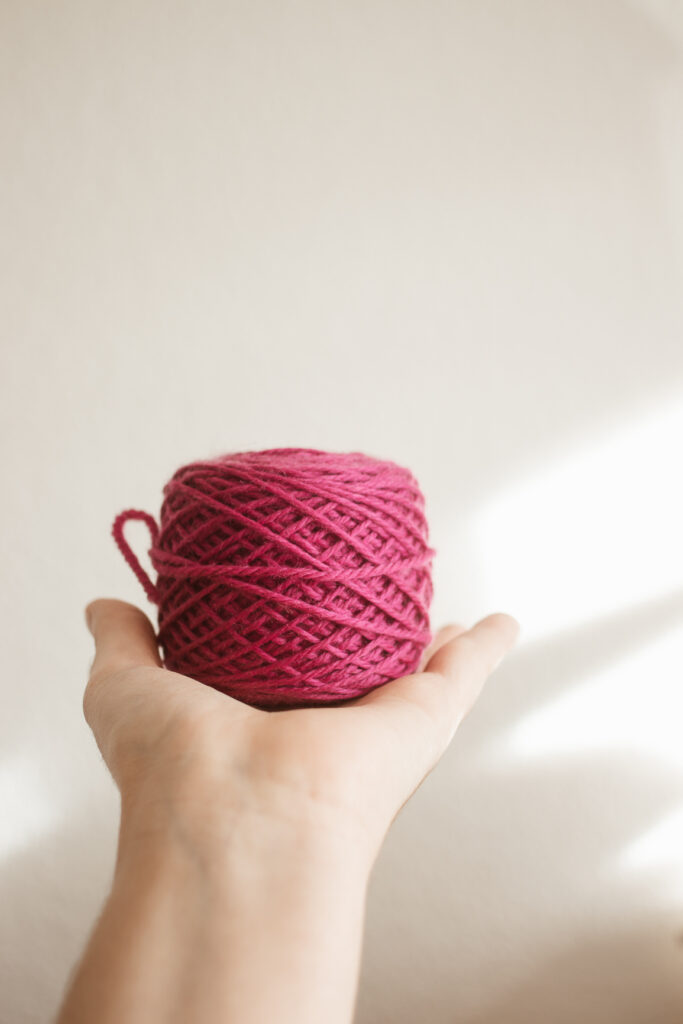
Choose your colors
Sometimes colors “speak” to me and I know immediately which ones to use. And sometimes this is far from the case. I’ve already told you about it here, but this time finding colors for this new model was a little more complicated than expected. Once the pattern was written, it took me a few days and at least 3 or 4 swatches to find a color combination that worked. I’m pretty happy with my current color choices, but I did have a few surprises along the way!
I’d originally chosen colors that looked good together “on paper”, but clashed when knitted together. I was pretty sure of myself every time and almost started knitting straight away, without making any samples. In the end, I’m glad I took the time to test them out, and it’s proof once again that making samples can save many hours of work ! In fact, it’s not really necessary to make round swatches, as we’re more interested in finding out whether the colors will match or not.
A few tips for choosing jacquard colors
Contrast is the key! We’re talking about several (=many) colors here. I’m creating this new pattern especially to use up all the leftover wool from other projects. The pattern calls for 7 (or more!) different colors and uses them in 4 jacquard patterns! I’m not showing you more than my balls at the moment as I’d like to publish this new pattern at an MKAL in June! (currently scheduled for release on June 1!) 🙊🙉🙈 As I’m pretty rubbish when it comes to keeping secrets, make sure you check out the blog before the end of the month as I’m sure I’ll crack on and tell you all about it by then 😊

There are two relatively simple ways to achieve good contrast when choosing your wool: choose either two different colors, or two shades of the same color. When choosing two different colors, always remember the color wheel: the brioche dot will be more visible if you choose two complementary colors or if you combine one color and one neutral. If you choose to stay within the same shade, I’d advise you to take wools at both ends of the range: one at the lighter end and one at the darker end. Otherwise, all your hard work and hours spent knitting a complicated pattern will go unnoticed. If you want more details, you can read the series of articles written by Lacie Lynnae on her blog, especially part #1 and part #2. The articles are in English but very well illustrated, so you’ll easily be able to see the effect of the different color combinations just by looking at the photos.
When in doubt, my little trick is to take a color photo of your choice and apply a black and white filter. Can you see the difference between the two wools? If so, you’ve got a winning combination on your hands!
in the On my needles, Tips & Tricks ...


Ball Winder Apology

Little details

